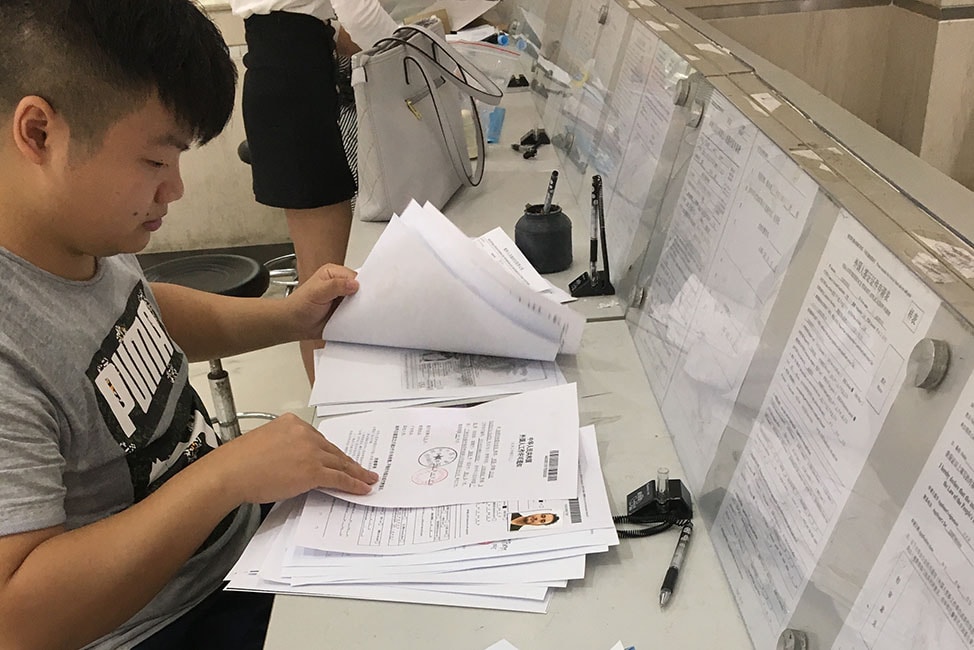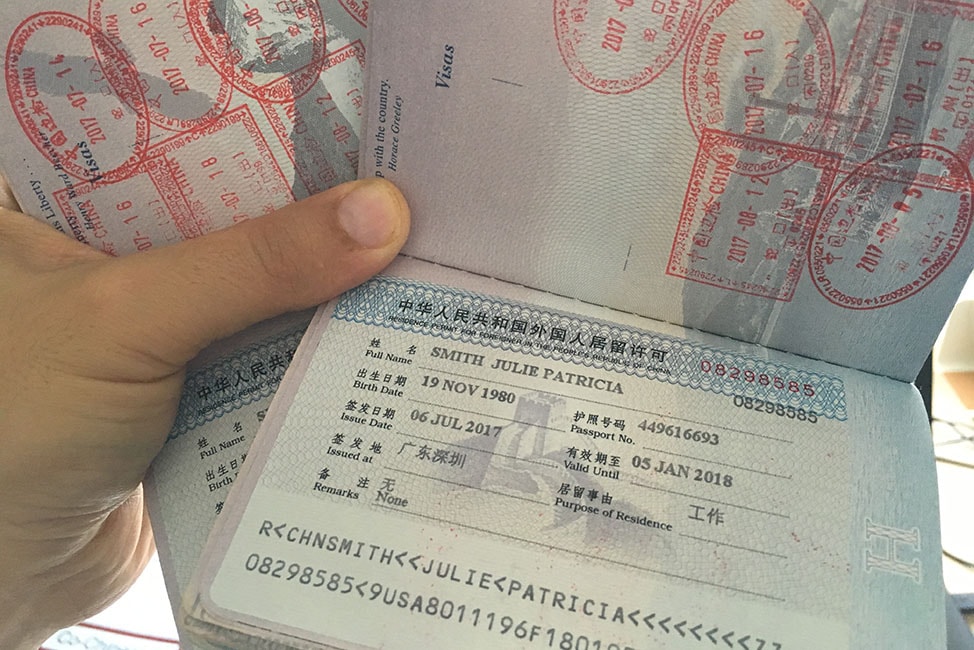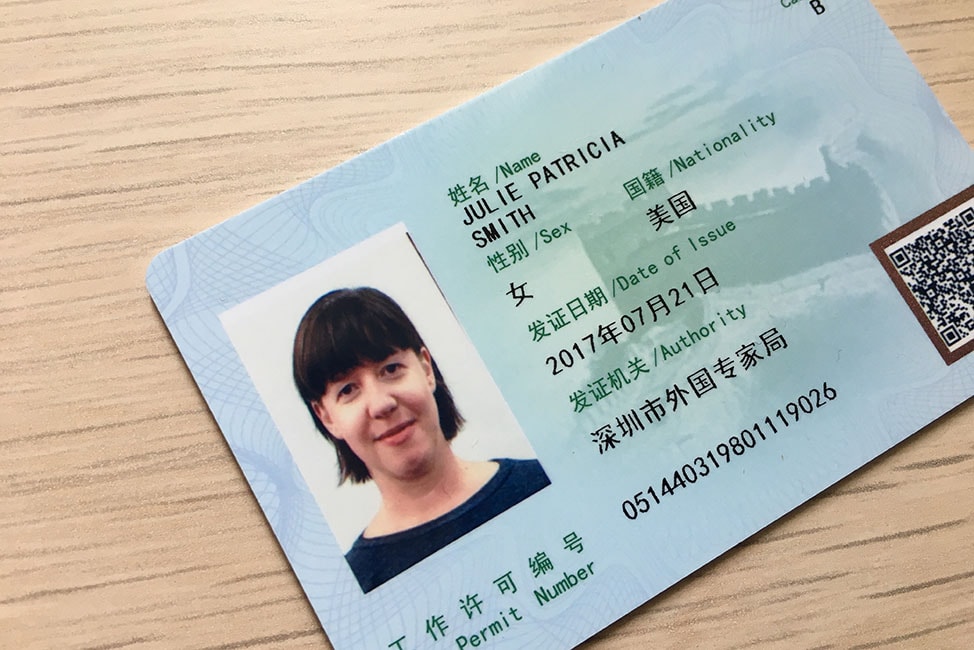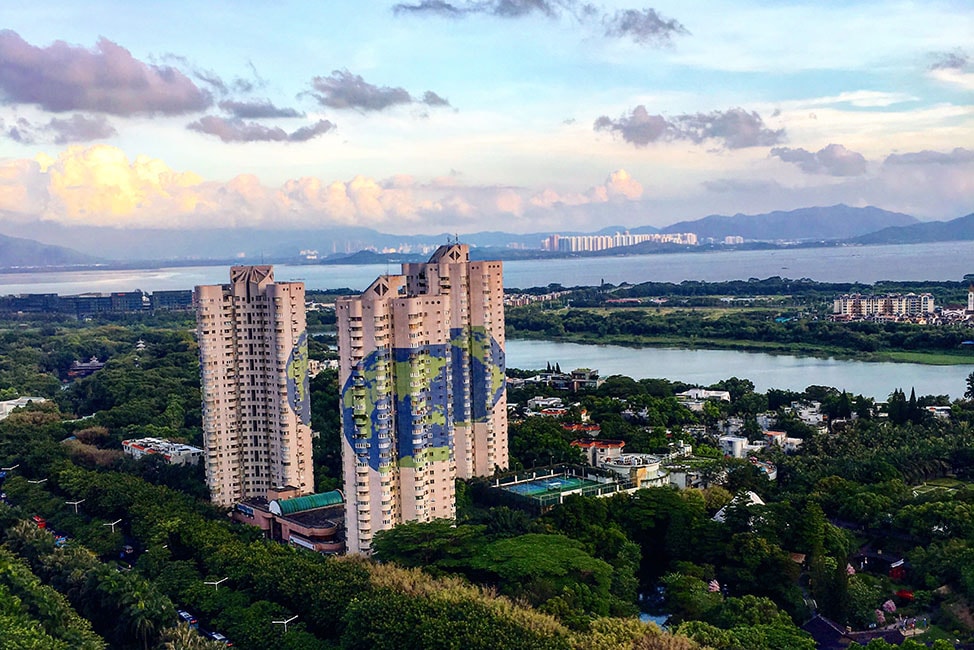The China Visa Process, Part III
This article is part of a short series about our journey to obtain our Chinese residency and work visas. We haven’t found great personal resources about what to expect when applying for such visas and went through the process completely clueless. This is Part Three in the series on our China visa process. Check out Part One and Part Two to see how we finally got into China.
So, we made it to China. We got off the ferry from Hong Kong International Airport at the Shekou Ferry Terminal, and entered the immigration queue, proud to show off our shiny Chinese visas.
Drew was entering Shenzhen on a L Visa, or a tourist visa, so he was a bit nervous about the immigration officer asking about a return flight or why he was entering on a tourist visa. I had my paperwork (or more like a binder full of paperwork), ready for any inquisitive customs agent. We reached the front of the line, handed over our passports and hoped for the best. They scanned the passports, took a look at the visas, stamped them, and gave them back. No questions.
Actually, the officer never said a word.
So there we were, legally in China for the first time. Of course, now that we had made it past that hurdle, we needed to figure out all of the other small details of life, like finding an apartment, figuring out how to get around the city, get cell phone plans. Obviously, we had a lot of work ahead of us.
And while you think that this would be the end of the visa process, you are mistaken. While we had the proper paperwork to enter the country, the visas and permits allowing us to stay and work were another matter.

The Chinese Residency Visa Application
The normal procedure from this point would be for me to apply for my permanent work visa, then we would both apply for our residency visas, which has to be done within 30 days of entering China. Of course, as luck would have it (and please, is anyone actually surprised by anything at this point?), things did not work out that way.
After a few poorly translated emails and WeChat conversations, I understood that we could not process our paperwork in the normal order. In fact, the labor department’s website wasn’t working for the work application, so instead, we’d apply for the documents in the reverse order.
Ok, whatever works.
On a blisteringly hot afternoon, we met our ‘paperwork liaison’ (one of the ‘visa guys’ from previous installments who has now been reduced to the guy who tells us what documents to bring and where) – Ben. He said we were going to a police station, which seemed weird, but in fact we arrived at a large government center. Police station, government office, it’s practically the same thing.
We filled out more paperwork (I didn’t know that was even possible at this point), handed over our passports, and a thick stack of additional required documents we had hauled with us from the US. We were informed that our passports would be returned with the residency visa in one week, and that the allotted time to pick-up the passports was 5-6pm.
We returned the following Monday, at around 5:15pm, as instructed, and picked up our visas. Shockingly, there was no hassle or last minute changes. We received our passports within a few minutes, making us fully legal residents of China.
At least for the next six months.

The Chinese Work Visa Application
A week later, I met Ben at yet another government office to finalize the work visa. After lots of meetings with Ben at various offices around the city, I’ve come to the conclusion that the relationship is best described as ‘Julie = paperwork mule, Ben = pushy local guy who cuts lines and hands documents to officials’. The HR team had already filed my paperwork through the government website (you know, the one that wasn’t working initially), so all I needed to do was pick up my work visa, which is a small plastic card.
I don’t even need to tell you that things didn’t go smoothly, right?
There are three work visas in Shenzhen: A, B, and C. A is for highly skilled workers, B is for “professional talent in line with labor market demand” and C is for unskilled workers (ouch, harsh). The HR team had applied for an B visa for me, but the computer in the visa office was showing that they had applied for an A visa. Ben logged in as himself on the government computer, and showed the government official that the correct application had been filled out.
Undeterred by a faulty application, the official looked through my massive stack of authenticated documents and asked where my diploma was. I showed him my authenticated copy of my diploma and the accompanying authenticated English translation of the Latin version of said diploma. He said that I needed the original diploma and they would not accept a copy, despite the fact that this copy had been authenticated by the Chinese consulate.
I left the office defeated. I fired off an angry email to the HR team, upset that what was supposed to be the final step in a process was going to be delayed yet again (I was planning a trip to the US and could get the diploma from its proper home in my parent’s attic).
It felt like I had run a marathon, and then within ten feet of the finish line, the race organisers decided to add an extra mile at the end for no reason.
In a magical twist of fate, the next day I got an email saying my diploma documents were fine, and the work visa could be processed. On a Friday morning, Ben came to my office, gathered my paperwork, and returned to the government office himself. He came back later in the day with the magic card that allows me to work, legally, in China.
(Oh, and excuse the HIDEOUS picture…If I knew that picture would be on any kind of permanent document I would have, I don’t know, tried to hide the dead look in my eyes of someone who went to five CVS stores to find one that printed the correct photo size.)

To say that this whole ordeal was confusing and frustrating would be an understatement, and it’s frankly difficult to relive it here. I remember our innocence back in March, when we still had dreams of being in China just in time to attend a friend’s wedding, and to see other friends who were passing through Hong Kong later that month.
Instead, we endured weeks of paperwork madness, trips to Indianapolis and Columbus, OH twice (!) to retrieve documents, not to mention the mad dash to the Chinese consulate in Chicago, which was especially inconvenient at the time considering we were in Maine.
In the end, it cost us exactly $2,115.71 to get our Chinese visas (this was reimbursed, so no hard feelings toward my employer).
So how long are we staying in China, you may wonder? We’ll be here for a while. At least until we have to renew our paperwork, which I’m assured is a much simpler process.












